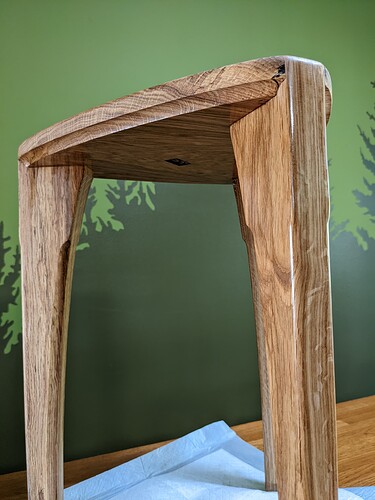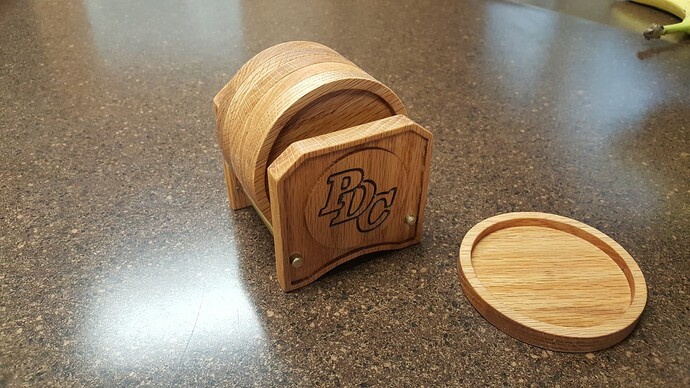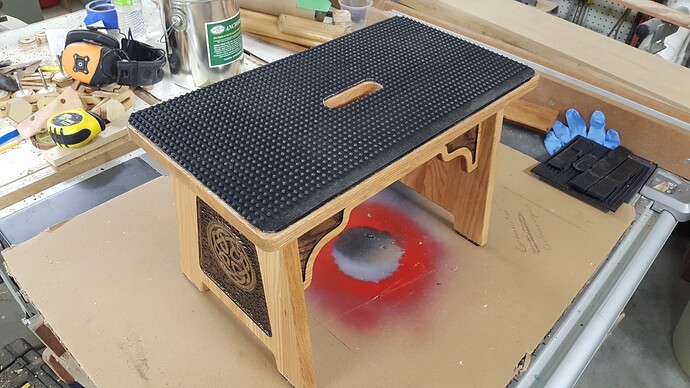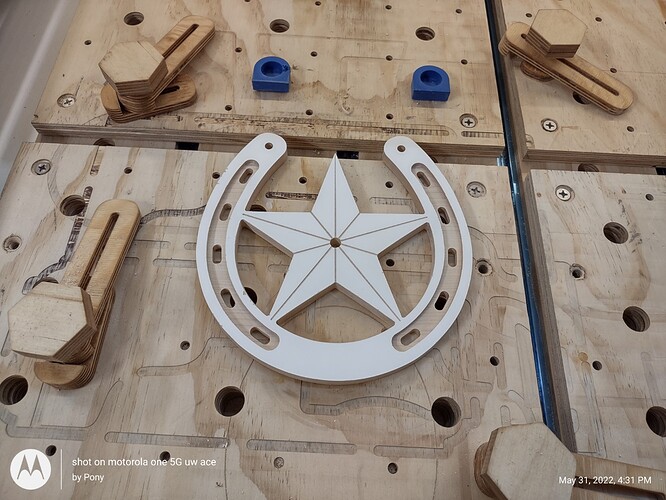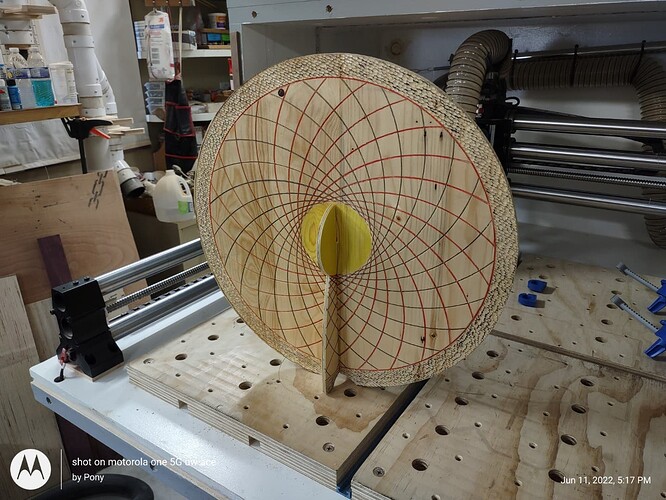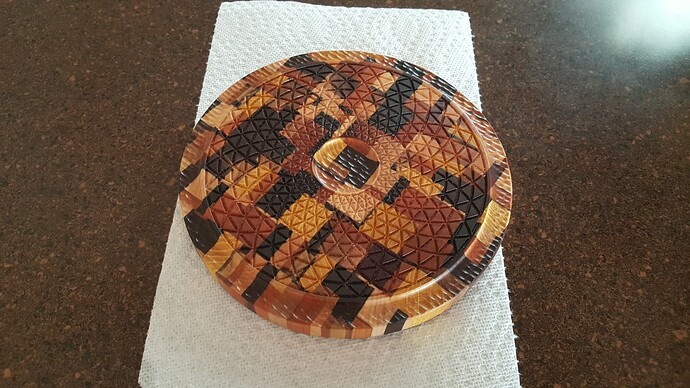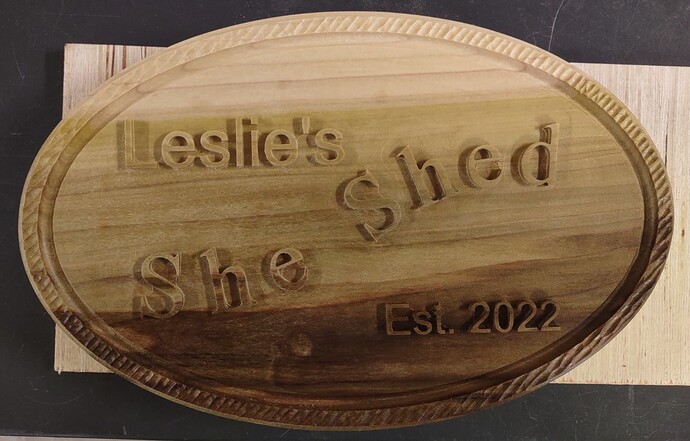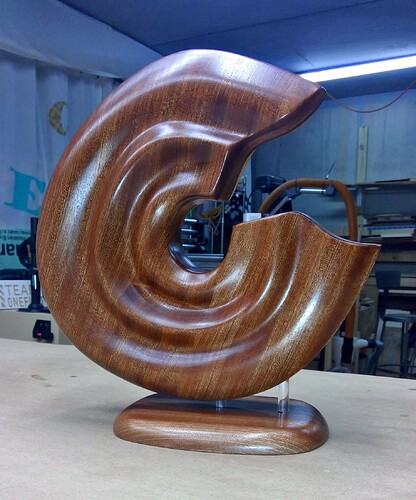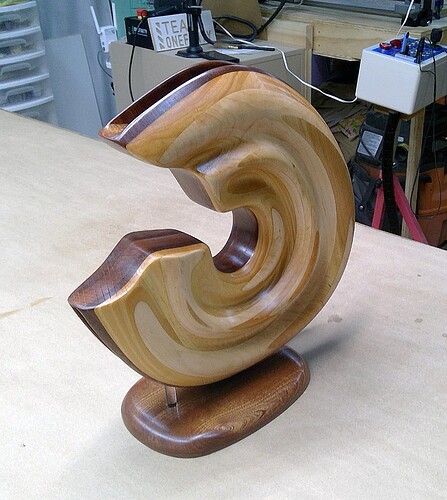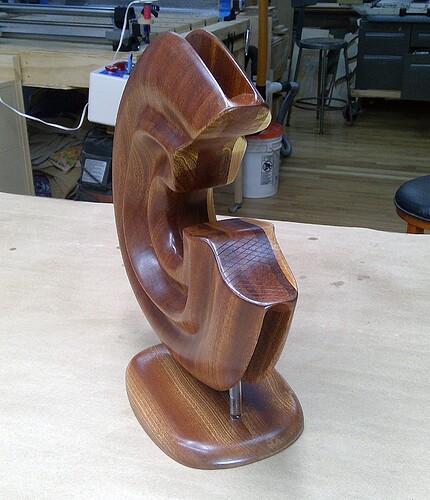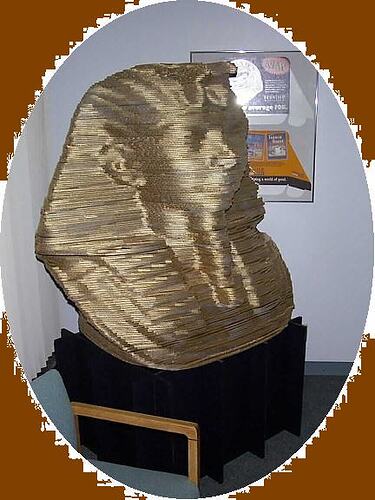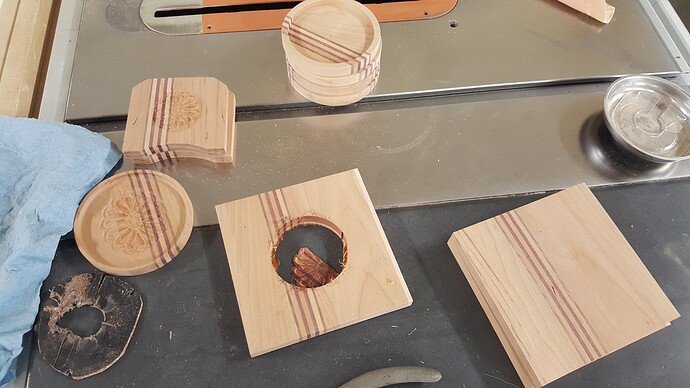Thanks Jim! It’s white oak with some minor spalting and nice flecking. I don’t work with white oak very often, but this was commissioned as a shower stool so I needed something that does well with water exposure and such. This specific slab turned out really great and a lot more interesting than oak usually is when I’ve worked with it in the past. Client is super happy with it. ![]()
Thanks Matt! Actually found the steel spheres on Amazon. They are hollow, but their wall thickness is probably close to 1/8", so they are fairly substantial and could easily be welded.
Joe
That is really exciting! The three leg design is unique and I love the ‘Maloof’ style joints as well.
Was this from plans or did you work through it from scratch?
Thanks Phil! I designed it from scratch. I’d be happy to share the code or model file if you want. I designed it in Carveco.
I’ve never heard the term “Maloof” and had to look it up ![]() . I’ve always called it an open sided mortise since I had no idea what it was actually called. I use them a lot for small furniture items.
. I’ve always called it an open sided mortise since I had no idea what it was actually called. I use them a lot for small furniture items.
Is it from 6/4 stock? The proportions are very well done.
It was a raw rough cut slab and I honestly can’t remember the thickness but it was definitely a bit more than 6/4 initially. It’s tough to say with the raw stuff since the thickness varies throughout the slab +/- .5".
Thanks. I get my hardwood from a local shop that planes to thickness so it’s sized correctly. I asked because it looked more like 6/4 than 8/4 but I thought maybe you planned down some 8/4.
I like the contouring you did on the legs and the points of the guitar pick seat.
Is it a true Maloof joint with the shoulders & opposing side tapers or just an open slot fitting over the seat point? Your “open mortise” name might be more correct. Cutting a Maloof joint would be really tricky on the OF without the specialized beveled bits and a two sided carve.
I am super fortunate to have a very expansive hardwood mill near where I live. They sell large cut-offs from the huge slabs by the pound, so if I don’t need a full (like 6+ feet long) slab, I can usually get what I need at ridiculously good prices. The white oak is sold for $1/lb. The wood for the stool was 17lb/$17. It takes a lot more work to shape the wood into usable stock, but I really enjoy that process and I’ve gotten pretty quick at it over the years.
No, the joints do not have that level of complexity. I wanted to add shoulders to the sides of the leg joint, but decided against it. The wood is thick since this is actually going to be sat on, not a plant stand sorta stool. To decrease the “bulkiness” of the top and legs I used a cove bit on the inside of the legs and underside of the top, which I believe really did change the overall aesthetic away from the bulky look, without sacrificing the strength. That said, with the cove on the underside of the top, adding shoulders to the leg joints would have been very, very complicated, or at least for me. I’m sure someone else could have figured it out easy enough but it wasn’t working in my brain. In order to keep the joint strong, I made sure the connecting point of the leg on the underside of the top extended way past the joint. For the joint to fail, the legs would have to literally shear off down the middle. Should be good. ![]() I’ve got another photo I’ll put up of the underside of the joint and I think the cove / shoulder thing that I’m saying will make more sense than my words.
I’ve got another photo I’ll put up of the underside of the joint and I think the cove / shoulder thing that I’m saying will make more sense than my words.
For reference, the stool is 13" in diameter, 18" tall. The top is 1" thick and the legs are 1.25" thick.
Thanks, it is MDF painted hunter green.
One is for finish cans the other is for adult beverage cans…
I use it for LOTS of stuff other than signs. All it takes is practice, practice, practice to become really good at drawings. I have an advantage as I was a professional designer using ArtiosCAD and a GIANT (86x220) Kongsberg cutting table until I retired. I now use VCarve Pro (pretty good software) and a Onefinity 32x32 Woodworker. Tip - for drawing practice, use one new tool over and over and over and over different ways every week. By the end of a year, you’ll be a good starting designer.
Great projects!
I like your tip on learning drawing. I’ve inadvertently been doing that teaching myself various software for some time now. (it is a slow process but YouTube helps)
And once you’ve drawn something, start new and draw the same thing again. Do it over and over and over again using different tools or a different approach. You’ll be amazed at the different things you’ll find you can do. That’s how I use to teach our new designers.
Here’s another drawing that I cut in rainbow poplar. I probably drew this 6-7 times using different styles until I was happy with it.
Always try new things or approaches. Stretch your boundaries.
***And make sure that you keep a timer nearby and take a break ever 30 minutes or so and walk around. Too many people hurt themselves only sitting in front of a computer for hours on end.
I’ve been working on this one lately. I recently added a vacuum press to the shop and was itching to try some re-saw laminating. The laminated side is sapele, clear white pine, cherry, and two types of maple, cut at varied thickness.
If I do this one again there will be lots of changes…making each side from solid pieces, eliminating the need for a base (though I like the floating nature of this one), and making the whole work chambered so it looks solid rather than split.
The bad news is we’re running out of room to put these sculptures in the house. Ah, maybe I need to work on signs too!
ArtiosCAD and a CAD table… were you in the printing and packaging business? I’m a Prepress Manager for a packaging printer and the experience here has helped my with the CNC learning curve. I ordered the woodworker the first day it was available not knowing a thing about CNC woodworking.
Gee, did ArtiosCad or Kongsberg give me away? I’ll toot my own horn here. Excuse the length of my reply.
Yes, 37 years in a corrugated plant (we made everything from F flute to CMA triple wall), 22 on the floor running almost all the machines (when I started, you were expected to learn all of them), everything from catching on the end of the corrugator to running an old up and down slot cutter, to 32", 50", 64" printer slotters, to folders, gluers, stitchers, clam shell die cutters and everything in between. But mostly on 66" rotary die cutters. I was even the printing plate layout maker for awhile. And I can still make a box makers knot faster than most anyone!
I became so good and came up with so many innovative ways of doing things that I was promoted to designer where I worked my way up to head designer of a 3 person dept., and was respected among all the plants and designers… Hummm, let’s see… 14 plants?, and about 20? designers. Don’t remember for sure anymore.
Anyway, when I went into the office, I knew more about computers than anyone in there (I’d already built, programmed and used them heavily and started back when everything was DOS and a tape drive - yes I’m older than dirt), and now I was on the cutting edge of CAD, first with, crud… can’t remember the name of the first program, but then Designer Workbench, then ArtiosCad.
I learned ArtiosCad inside and out, even the programming aspect of it which led to my making very unique drawings from inside the program, even ones that could morph into other designs.
Attached is a pic of something I made for our lobby years ago. 123 layers if I remember right.
I was also a woodworker my whole life and used my designing to make many templates.
Now in retirement, I just mostly putter making things for family. But I absolutely love designing and often just draw things for fun or the challenge.
Remember, a cnc is nothing more than a router using your brain instead of your brawn for how it moves. So think things through first and make cuts in the air first if you have to.
Pony
Re your next to the last line, that is why I just consider my 1F to be a great but additional shop tool.
Great Sphinx bust…a lot of slices though.
Yep, been there ![]() Between the OF, CNC plasma and laser, I have a tons of V1 projects around the house. Sometimes second and third copies as well if I particularly like something.
Between the OF, CNC plasma and laser, I have a tons of V1 projects around the house. Sometimes second and third copies as well if I particularly like something.
My wife has said no more in the house - I have to give it all away or keep it in my workshop.
Don’t fret if you make mistakes, learn from it. I’ve been running cnc’s for a long time, yet I still make occasional mistakes. Here’s what happens when you let your mind drift while you’re setting your material thickness and you type in .05 instead of .50. Thank goodness I always glue up extra pieces! Gee I wonder why I started doing that?
